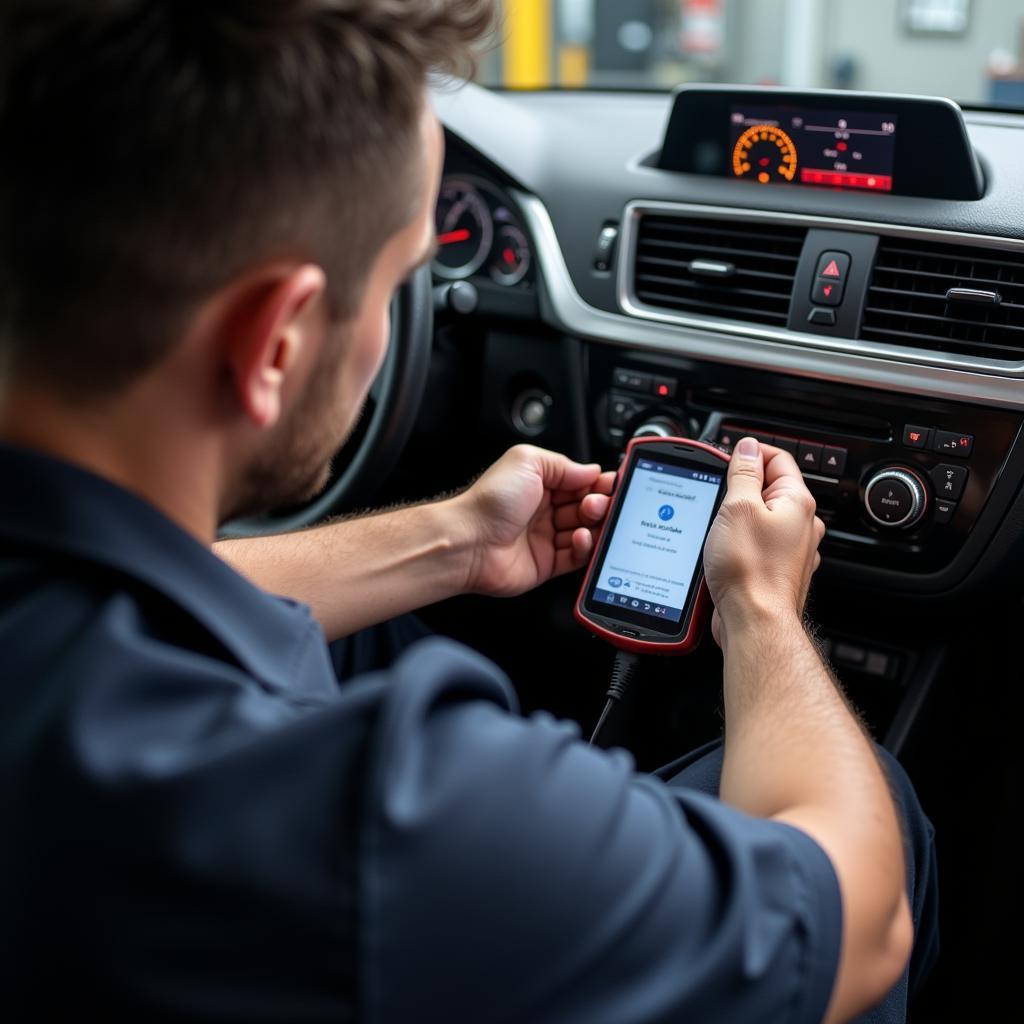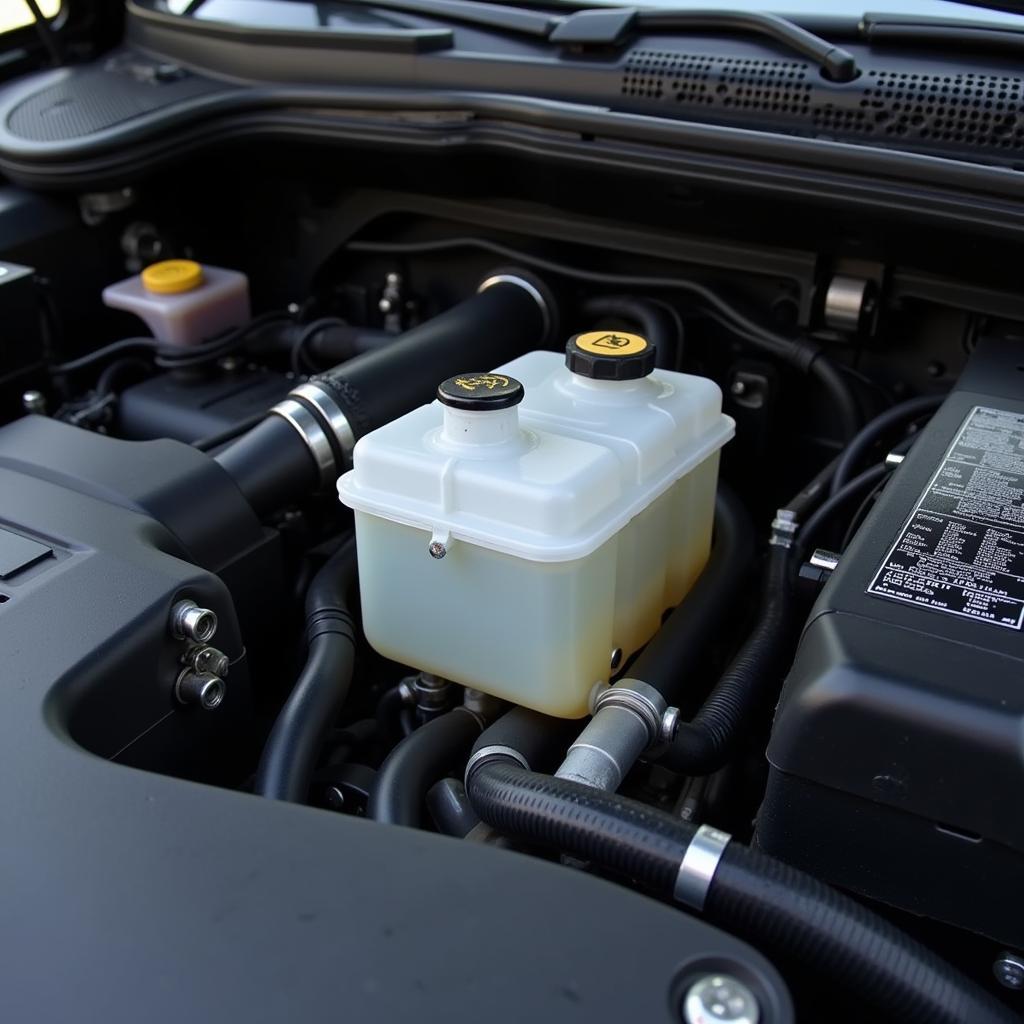The brake system warning light is one of the most important indicators on your dashboard. When illuminated, it signals a potential issue with your vehicle’s braking system that needs immediate attention. Ignoring this warning light can be incredibly dangerous, putting you and other drivers at risk. This comprehensive guide delves into the various reasons your brake system warning light might turn on, ranging from simple fixes to more complex issues requiring professional diagnostics and remote software solutions.
Understanding Your Brake System Warning Light
While the appearance may vary slightly between car models, the brake system warning light is typically a circle with an exclamation mark (!) inside, often displayed in red or yellow. A red light usually indicates a more serious issue requiring immediate action, while a yellow light might signal a less critical concern.
Common Reasons Your Brake System Warning Light is On
Several factors can trigger the brake system warning light. Here are some of the most common culprits:
- Low Brake Fluid: One of the most frequent causes is low brake fluid, often due to a leak or worn brake pads.
- Engaged Parking Brake: It might seem obvious, but sometimes the simplest explanation is the right one. Always double-check that you’ve fully disengaged your parking brake before driving.
- Faulty Brake Light Switch: This switch activates your brake lights when you press the pedal. A malfunctioning switch can confuse your car’s computer, triggering the warning light.
- Worn Brake Pads: Brake pads have wear indicators that create a high-pitched squealing sound when they wear thin, signaling the need for replacement. If ignored, this can also trigger the warning light.
- ABS System Malfunction: Your Anti-lock Braking System (ABS) prevents wheel lockup during hard braking. A fault within this system can illuminate the warning light.
What to Do When Your Brake System Warning Light Turns On
- Safely Pull Over: As soon as it’s safe, pull your vehicle off the road and come to a complete stop.
- Check Your Parking Brake: Ensure the parking brake is fully disengaged. If it was engaged, disengaging it might be enough to turn off the light.
- Inspect Brake Fluid Level: If possible, carefully check your brake fluid level. Refer to your owner’s manual for the location of the reservoir and instructions.
- Avoid Driving (If Possible): If the light remains on, especially if you suspect low brake fluid or a serious issue, it’s best to avoid driving and have your car towed to a trusted mechanic.
- Seek Professional Diagnosis: A qualified mechanic can accurately diagnose the problem using specialized equipment, potentially including remote software diagnostics and programming solutions for a comprehensive assessment.
Remote Software Solutions for Brake System Issues
Advancements in automotive technology have led to increasingly sophisticated brake systems. Modern vehicles often incorporate electronic components that require specialized software for diagnosis and repair. Remote software solutions are becoming increasingly prevalent, allowing technicians to:
- Pinpoint Electronic Faults: Diagnostic software can communicate with your car’s computer to identify specific fault codes and isolate the root cause of brake system issues, such as sensor malfunctions or ABS module problems.
- Perform Software Updates: Manufacturers regularly release software updates to enhance vehicle performance and address potential issues. These updates can often be performed remotely.
- Reprogramming Modules: In some instances, brake system components like the ABS module might require reprogramming to restore proper function. This can often be accomplished using advanced remote software solutions.
 Mechanic Using Diagnostic Tool on Vehicle
Mechanic Using Diagnostic Tool on Vehicle
The Importance of Timely Brake System Repair
“Ignoring a brake system warning light is like ignoring a flashing ‘danger’ sign,” says John Smith, a certified automotive engineer with over 20 years of experience. “Timely repair is not just about maintaining your car’s performance; it’s about ensuring your safety and the safety of others on the road.”
Addressing brake system issues promptly can prevent further damage, potentially saving you from costlier repairs down the line.
Conclusion
The brake system warning light is a crucial safety feature in your vehicle. Understanding what triggers it and taking appropriate action can mean the difference between a minor inconvenience and a serious accident. Remember, regular maintenance, timely inspections, and utilizing professional diagnostic services, including remote software solutions when needed, can go a long way in keeping your brakes in optimal condition and ensuring a safe driving experience.

